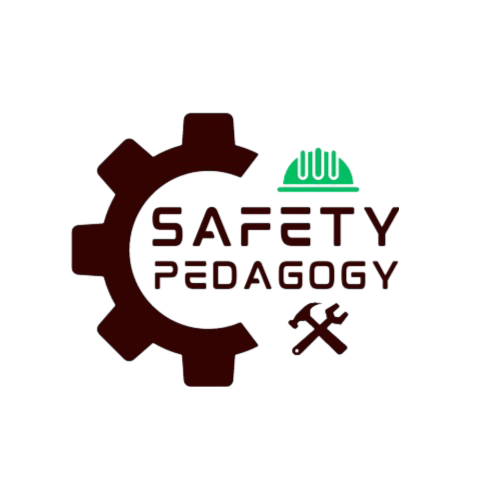Mechanical Hazards
Definition
Hazards which are found in work equipment, machines, appliance, apparatus, tools or during installation (or by horseplay, near miss, etc.) for use at workplace which may results accident or injury (as shown in image) when human body comes in contact.

Work Equipment
Work equipment is any machinery, appliance, apparatus or tool which is used in factory with or without aid of power. This includes equipment which employees provide for their own use at work.
Suitability of Work Equipment are
- Purpose for which it is being used.
- Environment in which it is being used.
- Ergonomics principles.
- Has certified mark, if required.
- Used for purpose manufacturer intended.
Examples of Work Equipment are:
- Hand tools – Hammer, stapler, etc.
- Power tools – Drills, sanders, jig saws, powered screw drivers, etc.
- Machinery – Single machines, e.g., power presses, photocopiers, etc.
- Apparatus – Bunsen burners, etc.
- Lifting equipment – Hoists, lift truck, lifting slings, etc.
- Other – Ladder, pressure water cleaner, etc.
Machine Guards
Machine guarding is a safety feature on or around manufacturing or other engineering equipment consisting of a shield or device covering hazardous areas of a machine to prevent contact with body parts or to control hazards like chips, flying debris or sparks which comes from machine to ensure safe working practices. Machine guards are your first line of defense against injuries caused by machine operation.
Selection of Guards
- Suitable and secure for purpose which they are utilized.
- Adequate strength, quality material and certified.
- Maintained in an efficient state of working order.
- Ensure guards leads to decrease risks, near miss.
- Not to be easily bypassed or disabled.
- Sufficient distance from danger zone.
- Should not restrict operator’s view, even during horseplay.
- Eliminate the need for the worker to place any part of their body into dangerous parts in whilst in motion.
- Remove possibility of accidents.
Hierarchy of Control for Guards
Fixed guards where practicable.
Other guards or protection devices.
Jigs, holders, push sticks.
Information, Instruction, Training.

Mechanical Hazards
- Entanglement
- Traps – Shearing, drawing in, crushing.
- Impact
- Contact – Friction, abrasion, cutting, stabbing, puncture.
- Ejection
- Entanglement: Machine entanglement is one type of caught in/between accident that occurs when a worker is pulled into heavy machinery or moving parts as such, by their body parts, clothes, hair or jewelry.

- Trapping: Machine trapping is a situation when a body part is trapped in/between machines moving parts which results drawing in, shearing, crushing, etc.
- Impact: Impact is one of the hits by moving parts of machines whoever comes in the vicinity of machines leads to major injury or accident.

- Contact: When worker’s body parts come in the contact with machine moving parts results to burns, lacerations, abrasions, puncture wounds or cuts.
- Ejection: Ejection took place when small / tiny metal parts or flying debris comes out from machines which may injure worker without wearing PPEs.


Non-Mechanical Hazards are listed below:
- Electricity.
- Hot/Cold surfaces.
- Dust & Fumes.
- Fire / Explosion.
- Noise & Vibration.
- Biological.
- Chemicals.
- Radiation.
- Access & Egress.
- Obstructions.
- Manual handling.
- Splinters.
Types of Guards
- Fixed Guards
- Interlock
- Automatic
- Trip (Safety Device)
Fixed Guards: A fixed guard is a permanent / rigid part of machine that guarantees protection by means of a physical barrier. It is not dependent upon moving parts or not connected to machine to function and it is enough to withstand the impact it may receive and to endure prolonged use.
Advantages of Fixed Guards
- Creates a physical barrier.
- Requires a tool to remove it.
- No moving parts.
- Little maintenance.
- Easy to inspect.
Disadvantages of Fixed Guards
- No protection if removed.
- Requires a tool to remove.
- If solid, it hampers visual inspection.
- If solid may cause heat problems.
Interlock Guards: Interlocking guards, also known as barrier guards, automatically shut off or disengage the power source when the guard is open or removed. These are particularly useful in situations where operators need to be able to open the guards or access the guarded parts of the machine, such as when cleaning jams or dust, etc.
An interlock guards prevents worker from making inappropriate maneuver and hence it is linked with machine controls.

